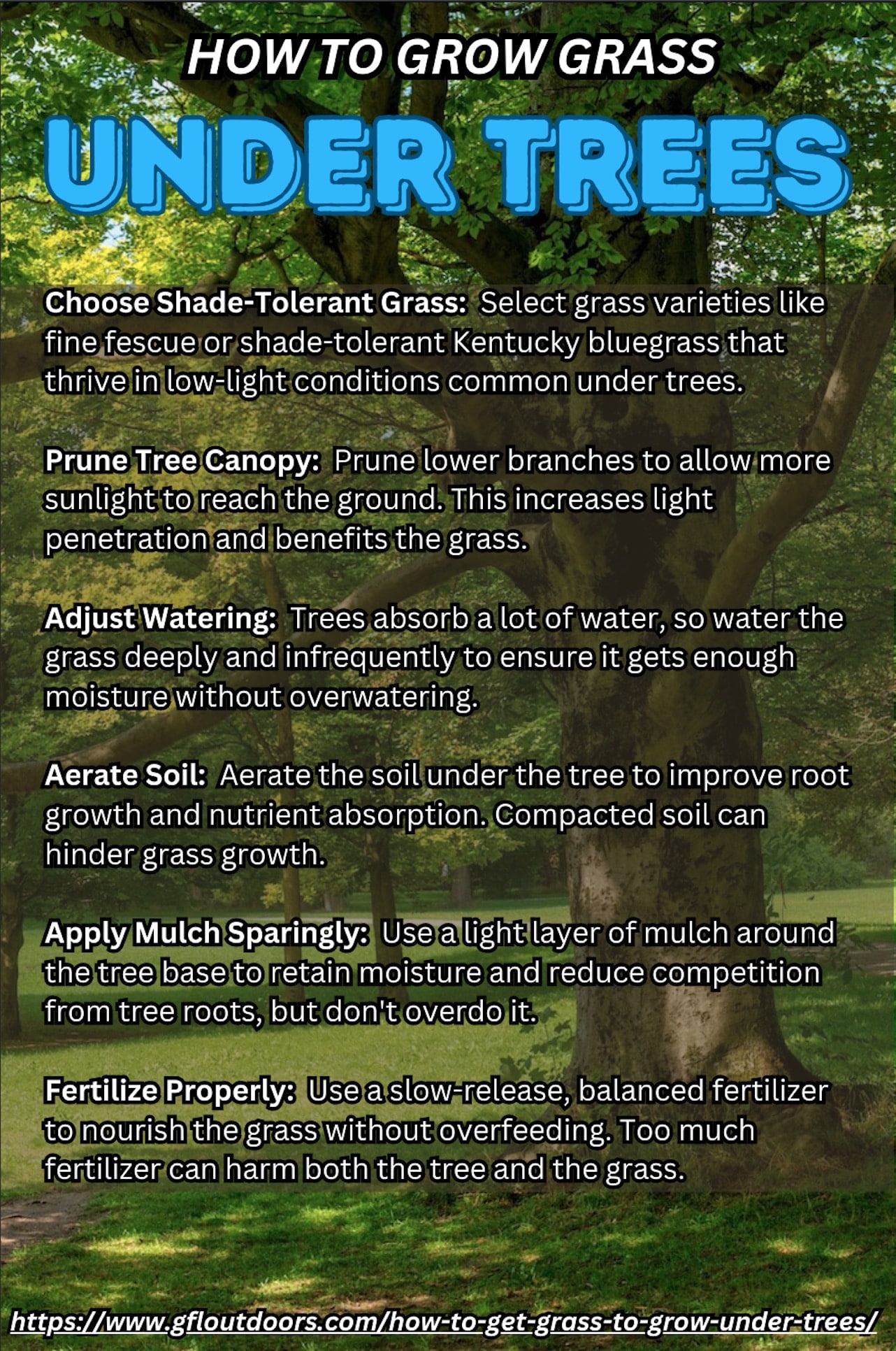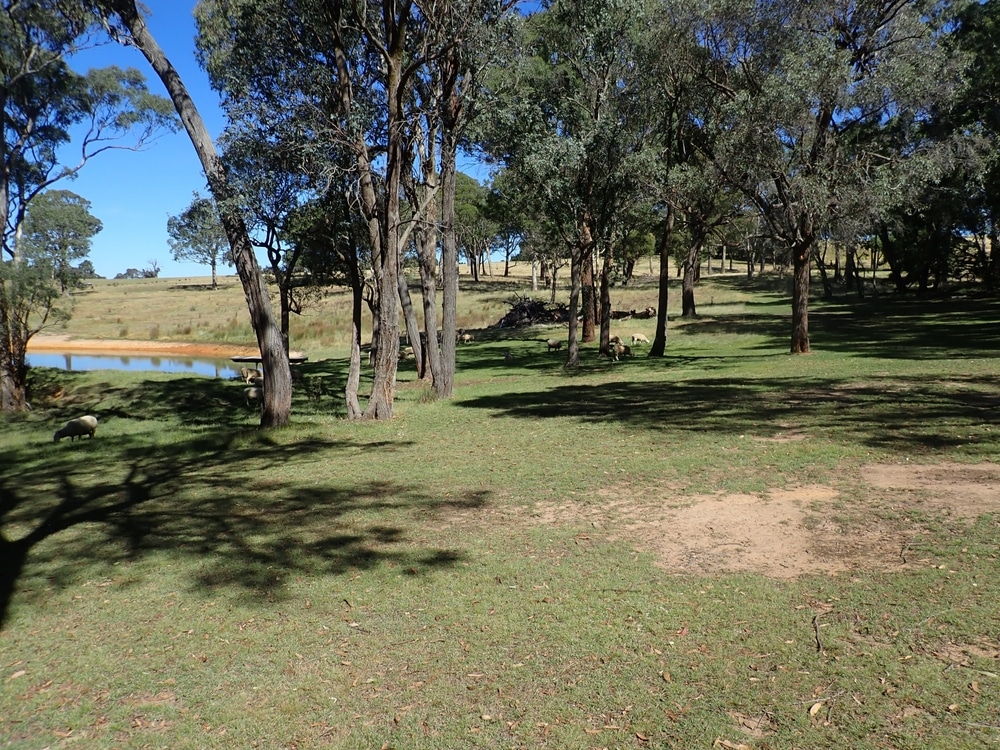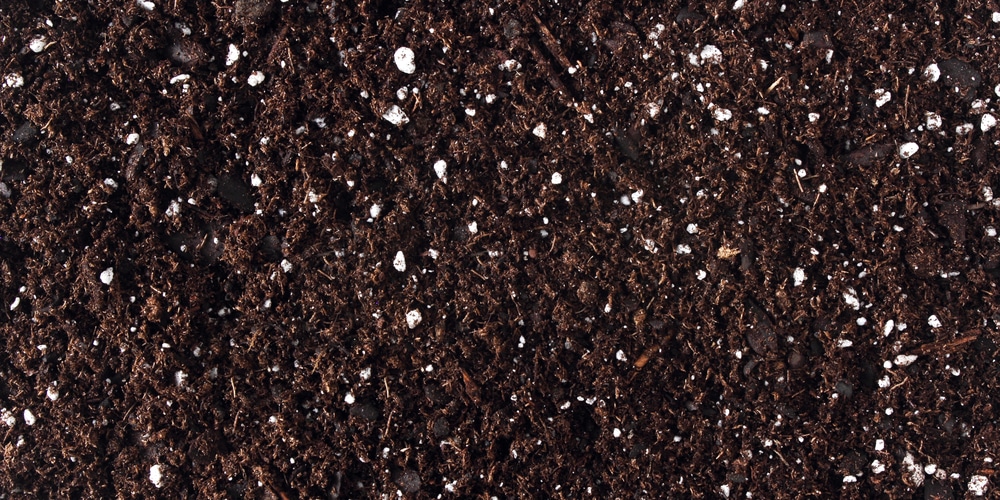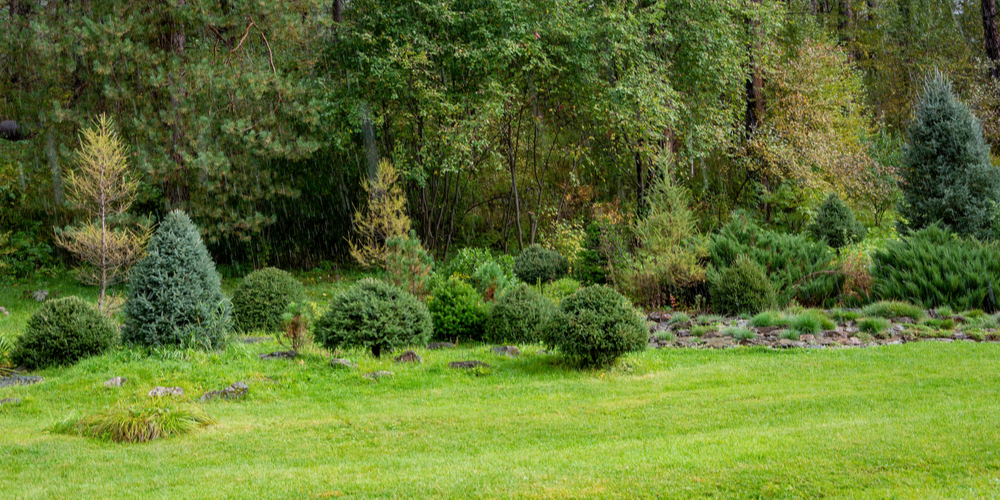Growing grass under trees can be a real challenge, but it’s not impossible.
The key to getting grass to thrive under trees is choosing shade-tolerant grass varieties and ensuring they get enough water and light.
With the right approach, you can transform these tricky spots into vibrant parts of your lawn.
Water is crucial since large trees can suck up hundreds of gallons a day, leaving little for your grass.
Deep and infrequent watering helps avoid diseases and gives the grass a fighting chance.
Also, don’t forget to prune those lower branches to allow more sunlight to reach the ground.
Specific types of grass, like Zoysia, can handle shade better than others.
Some grasses are specially suited for low-light conditions, making them ideal for growth under trees.
By aerating the soil and improving its drainage, you give these grasses the ideal environment to grow strong and healthy.
Key Takeaways
- Choose shade-tolerant grass varieties.
- Ensure adequate water and prune lower branches.
- Improve soil through aeration and proper drainage.
Understanding the Challenge
Getting grass to thrive under trees can be tricky due to issues like limited sunlight, competition for nutrients, and variable water needs.
Light Conditions and Photosynthesis
One major challenge is the limited sunlight under tree canopies. Trees absorb most of the sunlight for their own photosynthesis, leaving little for the grass.
Grass needs adequate light to perform photosynthesis effectively.
Trimming lower branches can help increase light penetration.
Shade-tolerant grasses like fine fescues or rough bluegrass can perform better in low light conditions.
Providing about 4-6 hours of dappled sunlight can support grass growth.
Avoid planting directly under dense trees like maples, as they cast heavy shadows.
Soil Composition and Root Competition
Soil under trees often has a different composition compared to open lawn areas due to tree roots. Tree roots compete with grass for nutrients and space. The soil may be compacted, affecting grass growth.
Conduct a soil test to determine the pH and nutrient levels.
Loamy soil, a balanced mix of sand, silt, and clay, is ideal.
If you find the soil lacking, mix in organic matter or compost to improve its structure and fertility. This provides both grass and trees with the nutrients they need.
Prune tree roots if necessary, but do so cautiously to avoid harming the tree.
Water Requirements and Drainage
Watering conditions under trees can be finicky. Tree roots can absorb a lot of water, leaving grass parched.
On the flip side, dense canopy can limit evaporation, causing poor drainage.
Water grass deeply and infrequently to promote deep root growth.
Early morning watering helps grass absorb moisture before it evaporates.
Ensure the area has good drainage to prevent waterlogged roots.
Consider using a drip irrigation system to deliver water directly to the grass roots without soaking tree roots excessively. This balances the water needs of both the tree and the grass.
Practical Solutions
Growing grass under trees can be challenging, but it is possible with the right techniques.
Proper pruning, selecting the right grass varieties, improving soil, and smart watering are key to a healthy lawn under trees.
Proper Tree Pruning Techniques
Pruning trees is essential to allow more light to reach the grass under the canopy.
Start by removing the lower branches and thinning out dense areas. This practice not only increases light availability but also improves air circulation, reducing the potential for disease in both the tree and grass.
Use sharp, clean tools to make cuts as this helps the tree heal faster. Avoid cutting too close to the trunk to prevent damage to the tree.
Choosing Shade-Tolerant Grass Varieties
Selecting shade-tolerant grass species makes a world of difference.
Fine fescues are ideal for shady, dry spots, while rough bluegrass works well in damper conditions.
These varieties are specially adapted to low-light environments and can thrive under trees.
Consider mixes that combine multiple types of shade-tolerant grasses to increase resilience and coverage. Mixes can help you achieve a lush, green lawn even in the shadiest areas of your yard.
Soil Improvement and Mulching Methods
Healthy soil is the foundation of successful grass growth.
Test your soil to determine its pH and nutrient levels. Adjust the pH as needed and fertilize appropriately based on the results.
Loamy soil, which balances sand, silt, and clay, generally offers the best conditions for grass.
Apply a layer of organic mulch around tree bases to help retain moisture and suppress weeds.
Mulch protects grass from extreme temperatures and prevents soil compaction.
Irrigation Strategies for Dry Spots
Watering properly ensures your grass gets the hydration it needs without overdoing it.
Water deeply and less frequently to encourage deep root growth.
Early morning is the best time to water since it reduces evaporation and allows the grass to dry before night, reducing disease risks.
In particularly dry spots, you might need to set up a targeted irrigation system or hand-water to ensure these areas receive adequate moisture.
Be sure to adjust watering schedules based on weather conditions to avoid both over-watering and under-watering.
Last update on 2025-04-19 / Affiliate links / Images from Amazon Product Advertising API






